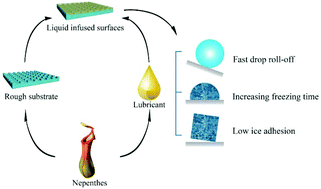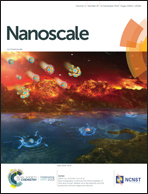Liquid infused surfaces with anti-icing properties
Abstract
Ice accretion on solid surfaces, a ubiquitous phenomenon that occurs in winter, brings much inconvenience to daily life and can even cause serious catastrophes. Icephobic surfaces, a passive way of processing surfaces to prevent surface destruction from ice accumulation, have attracted much attention from scientists because of their special ice-repellent properties, and many efforts have been made to rationally design durable icephobic coatings. This review is aimed at providing a brief and crucial overview of ice formation processes and feasible de-icing strategies. Here, the excellent anti-icing performance of liquid infused surfaces (LIS) inspired from Nepenthes is emphatically introduced. After a short introduction, the recent progresses in ice nucleation theory and ice adhesion decrease mechanism are comprehensively reviewed to gain a general understanding of the long freeze process and low ice adhesion on LIS. Subsequently, the anti-icing performance of LIS is systematically evaluated from four aspects regarding water repellence, condensation-frosting, long freeze process, and low ice adhesion. Finally, this review focuses on discussing the advantages and disadvantages of LIS and the potential measures to eliminate and alleviate these drawbacks.

- This article is part of the themed collection: Recent Review Articles


 Please wait while we load your content...
Please wait while we load your content...